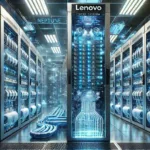This month, Lenovo and IBM announced a strategic partnership focused on helping Saudi Arabia deploy AI successfully. IBM and Lenovo are tightly coupled given Lenovo acquired both its server and its business PC business from IBM. This means that Lenovo policies and IBM policies are more closely coupled due to these mergers than would typically be the case, and both companies share the same high regard for service quality, ethics, innovation and technology advancement.
Both companies are also somewhat complementary in that IBM tends to live in tightly focused markets where its unique solutions play major roles, while Lenovo is a much broader vendor with interests ranging from consumer electronics (an area that IBM was never able to perform in) to server farms.
IBM’s focus on AI predates Lenovo’s, though Lenovo has been far more aggressive with robotics than IBM has been, suggesting that while there are still some overlaps, they are mostly minor and manageable.
This partnership has the potential to grow into something even more powerful.
A Partnership with the Potential of the Old IBM
The old IBM that existed before the 90s was a powerhouse with a technological reach extending from the desktop to mainframes. It was the majority of the tech industry in its prime, and parts were sold off by a number of CEOs over time, leaving it far smaller than it once was.
In contrast, Lenovo has been growing very rapidly over this same period. Its biggest growth spurts came when it acquired the IBM PC company and again when it acquired IBM’s x86 business. In both cases, those businesses became powerful peers to other technology companies that predated Lenovo in those spaces.
In an interesting way, Lenovo has developed a unique skill in terms of fixing the IBM businesses it acquired which largely had to do with adequately funding and focusing on them. IBM’s leadership strength is in AI with watsonx (which predated the AI wave by several decades), and with quantum computing research which is believed to be the next wave of technological advancement.
Lenovo, on the other hand, is extremely innovative with hardware, is aggressively moving into automotive and robotic space and could likely use some of IBM’s extreme focus on ethics and security to better differentiate its solutions in a variety of market segments.
The end result is that this partnership could deepen the relationship between these two firms and make both stronger as they share information and augment each other’s capabilities. It is particularly useful that both companies’ CEOs are willing to work with others, and both companies have a strong partnership care and feeding process which should assure the success of this endeavor.
While IBM has been instrumental in discovering new technologies in a variety of markets thanks to IBM Research, IBM’s current focus is narrower, suggesting it can’t make the greatest use out of a number of the technologies it has discovered or developed. But Lenovo, through the partnership, is far broader, suggesting that if the partnership extends to IBM Research, Lenovo should be able to bring many of these otherwise languishing concepts to market. More important, it could complete solutions that IBM lacks the breadth to complete, and Lenovo lacks the scale to achieve, for instance, an autonomous robotaxi deployment with a secure automated mainframe based on a highly secure control hub.
Wrapping Up: Two Companies Building for a Stronger Future
It is always exciting to see a partnership between two natural partners. IBM and Lenovo, thanks to Lenovo’s acquisition of IBM assets, are natural partners because Lenovo has what IBM lacks in breadth and IBM has what Lenovo lacks in depth. The combination is very close to the same capabilities as the old IBM that once led the technology market. These two firms are capable of working together very closely. If they pull this off, the future should be significantly enhanced for both firms.








